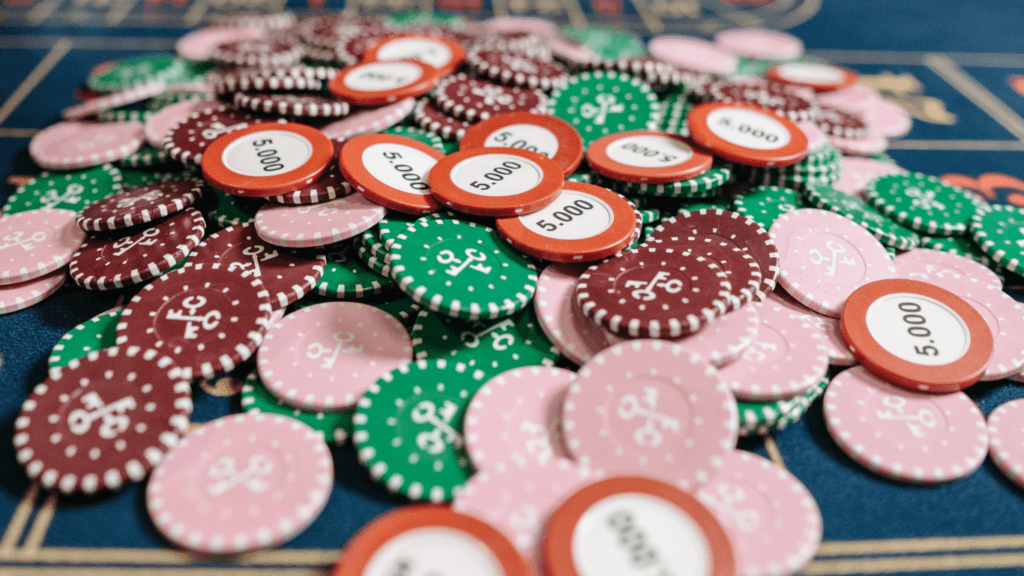Navigating a poker game with a short stack can be a challenging yet rewarding experience. In the world of poker, mastering the art of the short stack strategy is crucial for not only surviving but also thriving with fewer chips.
As a seasoned player, I’ve learned that having a short stack doesn’t mean you’re out of the game; it’s about making strategic moves that can turn the tide in your favor. In this article, I’ll share valuable insights and tips on how to effectively implement a short stack strategy to maximize your chances of success at the poker table.
From understanding the importance of patience and timing to capitalizing on opportunities, I’ll guide you through the essential elements of playing with a short stack. Whether you’re a novice looking to improve your game or a seasoned player seeking new tactics, mastering the short stack strategy can elevate your gameplay to new heights.
Understanding Short Stack Strategy
When it comes to poker, having a short stack can be both challenging and rewarding. As a seasoned player, mastering short stack strategy is crucial for success at the table. Short stack strategy revolves around key elements such as patience, timing, and the ability to capitalize on opportunities.
Whether you’re a novice player looking to enhance your skills or an experienced player wanting to diversify your tactics, understanding short stack strategy is essential for thriving in the game.
Implementing Short Stack Strategy
When implementing short stack strategy in poker, I focus on key aspects that can make a significant difference in the game. Here are some essential considerations to keep in mind:
Choosing the Right Hands
In short stack play, I prioritize selecting strong starting hands to maximize my chances of winning. I focus on high-value hands like pocket pairs, high cards (Ace-King, Ace-Queen), and suited connectors.
By being selective with hands, I increase my probability of winning pots and capitalizing on favorable situations.
Adjusting to Stack Size
Adapting to the stack size is crucial in short stack strategy. I emphasize the importance of understanding how my stack size influences my decisions. With a short stack, I adjust my playing style to be more aggressive and capitalize on opportunities to accumulate chips quickly.
It’s essential to leverage the shorter stack effectively to stay competitive at the table.
Short Stack Strategy in Tournament Play
In tournament play, short stack strategy becomes crucial for maximizing your chances of survival and success. When facing a dwindling chip stack, it’s essential to make strategic decisions to stay in the game and potentially turn the tide in your favor.
- Key Elements of Short Stack Strategy: Implementing effective short stack strategy involves focusing on key elements that can help you thrive even with fewer chips. Patience is paramount, as timing your moves carefully is vital to capitalizing on opportunities that can boost your stack.
- Choosing the Right Hands: Selecting the right hands to play is a critical aspect of short stack strategy. High-value pairs and suited connectors are favorable starting hands that can potentially lead to significant gains and help you survive tough situations.
- Adapting Your Playing Style: Adjusting your playing style based on your stack size is imperative in tournament play. Embracing a more aggressive approach can be beneficial when your stack is short, allowing you to build momentum and intimidate opponents.
By mastering the intricacies of short stack strategy, you can navigate the challenges of limited chips effectively and increase your chances of thriving in tournament settings. Remember, strategic decision-making and a calculated approach are essential elements for success when playing with fewer chips.
Tips for Success with Short Stack Strategy
Building a strong short stack strategy is vital for poker players aiming to excel in tournament play. Here are some essential tips to maximize your chances of success when playing with fewer chips:
- Choose Starting Hands Wisely: Select high-value pairs like pocket aces or kings for strong preflop plays. Consider playing suited connectors or high cards to increase your winning potential.
- Be Aggressive and Selective: Take a more aggressive approach to accumulate chips quickly and put pressure on opponents. Focus on playing fewer hands but playing them aggressively to maintain control.
- Master Short Stack Push-Fold Strategy: Understand when it’s optimal to push all-in with your short stack to apply maximum pressure. Learn the key ranges for shoving based on your stack size and position at the table.
- Pay Attention to Stack Sizes and Position: Adapt your strategy based on your stack size relative to the blinds and antes. Utilize your position at the table to make strategic moves and gain an advantage.
- Maintain Discipline and Patience: Stay disciplined and avoid impulsive decisions that can deplete your short stack. Be patient and wait for the right opportunities to make strategic plays and build your stack.
By incorporating these tips into your short stack strategy, you can enhance your gameplay, leverage your chip stack effectively, and increase your chances of thriving in poker tournaments. Mastering the art of playing with a short stack requires practice, versatility, and a strategic mindset to outmaneuver your opponents and secure victories.



 Margarita Ventura
Senior Sports Betting Analyst
Margarita Ventura is a seasoned sports betting analyst with an impressive track record of success in the field. Known for her sharp analytical mind and meticulous attention to detail, Margarita combines her deep knowledge of sports with advanced statistical techniques to provide readers with reliable, data-backed betting strategies. Her background in sports psychology and analytics allows her to decode trends and offer unique perspectives on betting odds, player performance, and game outcomes. Margarita’s articles have become essential reading for anyone interested in maximizing their sports betting outcomes. At Pro Gamble Genius, she is dedicated to helping readers make educated bets, whether they're new to sports betting or seasoned pros. Margarita’s insights not only enhance readers' understanding of sports betting but also empower them to make confident, calculated wagers.
Margarita Ventura
Senior Sports Betting Analyst
Margarita Ventura is a seasoned sports betting analyst with an impressive track record of success in the field. Known for her sharp analytical mind and meticulous attention to detail, Margarita combines her deep knowledge of sports with advanced statistical techniques to provide readers with reliable, data-backed betting strategies. Her background in sports psychology and analytics allows her to decode trends and offer unique perspectives on betting odds, player performance, and game outcomes. Margarita’s articles have become essential reading for anyone interested in maximizing their sports betting outcomes. At Pro Gamble Genius, she is dedicated to helping readers make educated bets, whether they're new to sports betting or seasoned pros. Margarita’s insights not only enhance readers' understanding of sports betting but also empower them to make confident, calculated wagers.
